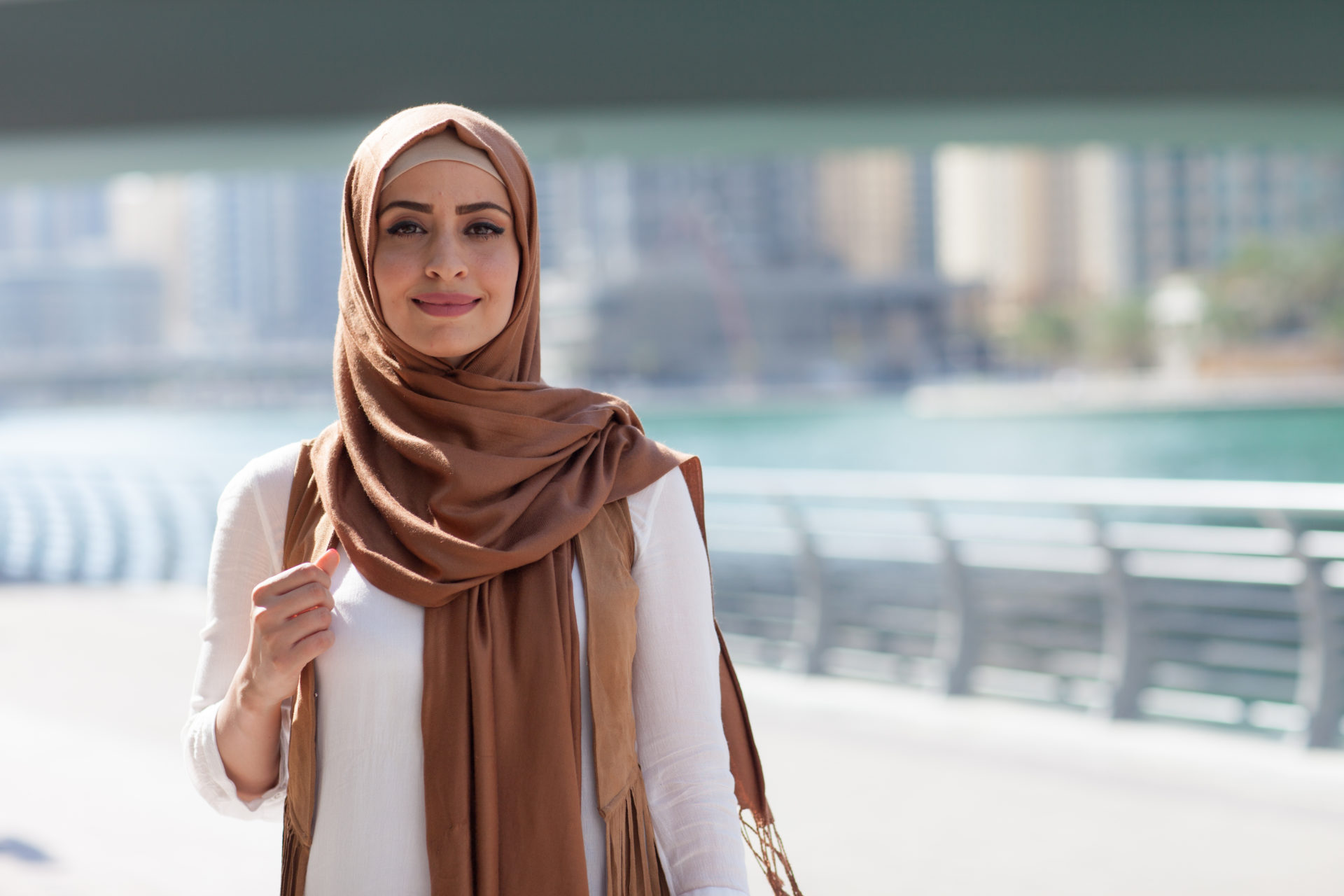Types of modest dress:
Hijab: A scarf that covers the hair and neck
Burqa: A covering that covers the whole body, sometimes with openings for the eyes
Chador: A cloak worn from the top of the head to the ground, usually without a veil
Niqab: A veil that covers the face, sometimes with openings for the eyes
Source: dictionary.reference.com
Quran passages about hijab:
(O Prophet! Tell thy wives and thy daughters and the women of the believers to draw their cloaks close round them (when they go abroad). That will be better, so that they may be recognized and not annoyed. Allah is ever Forgiving, Merciful.) (Al-Ahzab 33:59)
(And tell the believing women to lower their gaze and be modest, and to display of their adornment only that which is apparent, and to draw their veils over their bosoms.) (An-Nur 24:31)
As she went through security in a California airport, she was pulled aside for a private security check. She wasn’t sure if it was for her hijab, the glitter on her shirt or both.
“I had on a shirt with glitter on it,” University College freshman Maryum Elyazgi said. “They had me checked privately, and they checked my hands for explosive powders. The only real time I’m really judged is when I go through security at airports.”
Although it marks her as different, Elyazgi said she enjoys the distinction that wearing a hijab gives her.
The headscarf that some Muslim women choose to wear brings Elyazgi a sense of pride, she said, despite the confused looks it sometimes brings her.
“I feel like it makes me a stronger Muslim,” she said. “I’m lighter-skinned, so without it I’m just another girl.”
The daughter of parents from Libya and Palestine, Elyazgi is the youngest of six children, including three sisters. Growing up, she watched her female family members cover up, respecting passages in the Quran — Islam’s holy book — that instruct women to be modest.
Although her family does not require her to wear her hijab and cover her arms and legs, she said she would feel strange if she did not cover up.
Initially, Elyazgi said she was hesitant to wear her scarf. She began wearing it late in middle school, a common time period for Muslim women to begin the practice, she said.
“I was nervous about it at first,” she said. “I didn’t want to be treated differently.”
It was that same initial fear that made University College freshman Mobeena Amil hesitant to begin wearing her hijab.
“Once I understood wearing it, and put it on, I understood its purpose,” Amil said. “Now, I can’t imagine not wearing it. I love being able to be recognized as a Muslim.”
That distinction, both women said, has never really brought hostility toward them.
“There was one time in high school someone said something rude … but it was just a stupid remark,” Elyazgi said. “Most people aren’t afraid, just curious.”
Rather than fear and hostility, the women both usually meet curious looks and questions.
“I love it when people ask me questions about it,” Elyazgi said. “I get to tell them about my religion. I welcome the questions, and I’m never offended by them.”
Support is not hard for the women to find.
“I’m used to the looks, so I don’t always notice people staring at me, but since this is a college campus and so many women here wear them, I think people are more accepting,” Elyazgi said.
When Amil decided to begin wearing her hijab, she turned to her non-Muslim friends to gauge the reaction she’d get wearing a headscarf.
“They said they were really proud of me,” she said. “It was great to have a boost of encouragement.”
Both Amil and Elyazgi incorporate their hijabs into fashion, coordinating the scarf with the day’s outfit. Fashionable modesty is common in their families.
“My cousin works at Forever 21, and she’s always changing her hijab, tying it different ways, “Elyazgi said.

